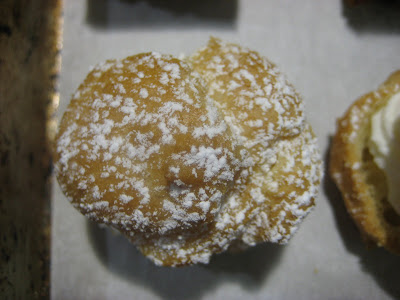We started off by preparing a marinade for a beef stew with red wine. More on this tomorrow.
Then we made onion soup. No surprise here, but you caramelize the onions and then add stock and simmer. Really simple. Right before service, toast the baguette slices and top with grated cheese - melt cheese and serve on top of soup. I could not stop snacking on the baguette. This might be chef sacrilage, but I don't really like Gruyere cheese. I think I might have eaten at least 5 slices of the baguette besides the three I toasted, but I only had a little bit of cheese. Bread. Carbs. So good.
Then we plated Filet de Boeuf, Sauce Marchand de Vin, and Jardiniere de Legumes. Wrap the tenderloin with bacon (barding) and sear both sides, then finish in the oven. Once it is cooked, set aside the beef, but use the pan to make the sauce out of red wine and veal stock. Blanch carrots, green beans, and turnips. Can you believe this is the first time I've had a turnip? In order to season vegetables, heavily salt the water - never season after they have been cooked.

Chef Z liked my vegetables - he said you can tell they're purposely placed, but they looked natural also. The stock tasted too much like stock instead of wine and stock (I had to put in extra stock because it had reduced without getting nappe). The vegetables and meat were properly cooked, but needed more seasoning.
I talked about politics with Chef T (from Garde Manger) in the dishroom tonight. I kind of thought he was a little dull originally, but the more I talk to him, the more interesting he is. He's quiet and clearly lonely, but he really enjoys politics. We talked about voting early, and I told him how Obama is doing election night here, and about Palin on SNL. Chef's very funny. I bet he'll write me a letter of rec for my externship if I asked him.
Lessons Learned:
The chefs really are right when they say everything tastes better with bacon. It's so true.
I'm starting to better understand the purpose of plating. I used to make fun of it, but I can see how it matters. And why you only put a tiny bit of sauce when you make more than a plate's worth.
I'm doing pretty well on the quizzes in this class - we've had one on soups and one on stocks and poultry. They're multiple choice, and he said the final will pull from them. But he does a decent job with his lecture - he doesn't really drift off-topic, so I have an easier time listening and remembering what he says.











































